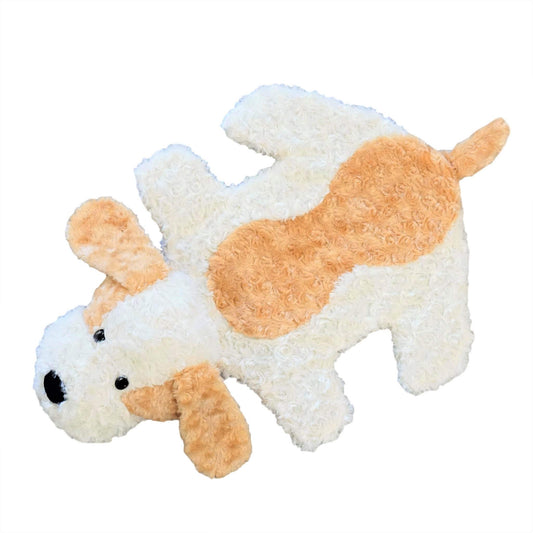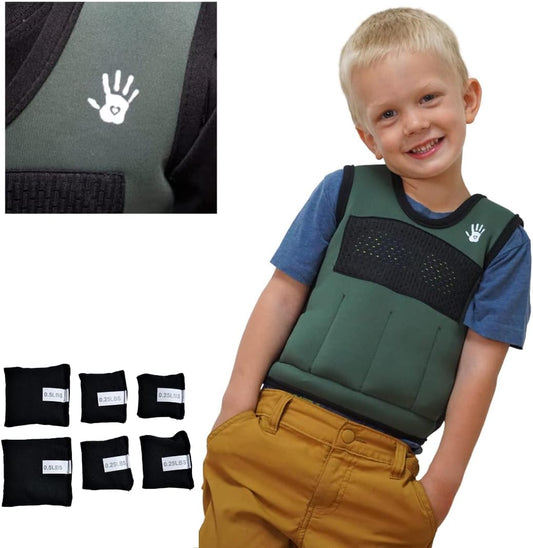Introduction:
Weighted stuffed animals, also known as weighted sensory toys or weighted plush toys, are often used as a tool to provide sensory input for kids and adults with conditions such as ADHD (Attention Deficit Hyperactivity Disorder). These plush toys typically weigh between 1 and 5 lbs. Some individuals with ADHD may find weighted stuffed animals helpful in managing certain symptoms. It is important to note that the effectiveness of weighted stuffed animals can vary from person to person.
However, it is crucial to approach the use of weighted stuffed animals or any sensory tool for ADHD under the guidance of healthcare professionals, such as occupational therapists or pediatricians. In this article, I will discuss the impacts of weighted stuffed animals on patients suffering from ADHD.
What is the appropriate weight for a weighted stuffed animal?
Common weights for weighted stuffed animals range from a few ounces to several pounds. Most weighted stuffed animals weigh between one and five pounds, so they are not generally extremely heavy. If you just want a light sensation of weight, one or two pounds will be sufficient for you. If you are looking for a more noticeable weight, three or four pounds is likely ideal.
It is crucial to consider the person’s size, age, and sensitivity to weight when choosing the appropriate weight. For children, the general recommendation is that the weight should not exceed 10% of their body weight.
How heavy should my weighted stuffed animal be?
The weighted stuffed animal should be made with soft, plush fabric that is gentle on your skin. Choose an animal that is filled with a weight that is comfortable for you. The weight of the animal should be distributed evenly so that it does not put too much pressure on any one part of your body.
The appropriate weight can vary based on factors such as age, size, and individual sensitivity. In general, weighted items are often designed to be around 10% of the individual's body weight.
Why do kids with Autism like weighted blankets?
Weighted blankets are used as an intervention strategy to improve sleep in children with autism who have sleep impairments. The current underlying purpose for weighted blankets is to provide deep touch pressure stimuli, thus acting as a calming mediator by increasing parasympathetic activity like hugging someone.
Many kids with autism spectrum disorder (ASD) may find comfort and relief from sensory issues through the use of weighted blankets. There are some reasons why kids with autism often like weighted blankets. These are:
- Deep Pressure Stimulation (DPS).
- Sensory Integration.
- Calming Effect.
- Improved Sleep.
- Routine and Predictability.
Do kids with ADHD like weighted blankets?
Weighted blankets can be helpful to some kids with ADHD. These blankets are designed to create a sense of calmness. The response to weighted blankets can vary among children with ADHD, as their preferences and sensory sensitivities differ. Some children with ADHD may find comfort and benefit from the deep pressure provided by weighted blankets. The gentle, even pressure can have a calming effect on the nervous system, potentially helping with relaxation and generating focus on their activity.
However, it is important that preferences can vary, and not all children with ADHD will respond positively to weighted blankets.
Do people with Autism like weighted blankets?
Hundreds of autistic people say that their weighted blanket is the best sensory tool they own. But for others, weighted blankets feel restrictive or uncomfortable. So, the likeness of weighted blankets among people may vary from person to person. Moreover, it is important to note that individuals with autism spectrum disorder (ASD) are unique and may have varied preferences and sensitivities, as some people with autism find comfort in using weighted blankets. Weighted blankets are designed to provide deep touch pressure, which can have a calming and grounding effect for some individuals.
Why do people with ADHD like weighted blankets?
Many people suffer from ADHD, like weighted blankets. Calming down and self-regulating can be a challenge for people with ADHD. They often struggle with managing their emotions and behavior. Weighted blankets are designed to relieve stress by providing pressure on the body.
There are a few reasons why people with ADHD might like weighted blankets. Important ones are mentioned below:
- Sensory Input.
- Improving Focus on activities.
- Enhanced Sleep.
- Anxiety Reduction.
- Sensory Seeking.
Do kids with Autism like weighted blankets?
Yes, kids with Autism do like weighted blankets. These blankets are designed to provide a sense of security and can have a calming effect by applying gentle, even pressure to the body, just like hugging someone. This pressure is thought to stimulate the release of neurotransmitters like serotonin and dopamine, promoting relaxation and potentially helping with anxiety and sensory processing.
Hundreds of autistic people say that their weighted blanket is the best sensory tool they own. But for others, weighted blankets feel restrictive or uncomfortable. It is, therefore, essential to consider the individual preferences and sensitivities of each child with autism.
Can adults use weighted stuffed animals?
Yes, it is healthy for adults to sleep with a weighted stuffed animal. Weighted stuffed animals are commonly associated with sensory benefits and are often used as a form of therapy for adults and kids with sensory processing disorders, anxiety, or attention difficulties. While these items are often marketed towards children, there is no strict age limit for their use. Adults can also find comfort and relief from stress or anxiety by using weighted stuffed animals or blankets.
Why are weighted toys good for Autism?
Weighted toys are often recommended for individuals (both adults and kids) with autism because they can provide sensory input and contribute to sensory regulation. Individuals with autism spectrum disorder (ASD) often experience sensory processing challenges, where their nervous system may struggle to effectively receive, process, and respond to sensory information from the environment. Therefore, these weighted toys lead patients to the path of recovery.

Are weighted stuffed animals good for kids with Autism?
Children with Autism Spectrum Disorder (ASD) can benefit from weighted toys/plush toys because of their ability to trigger Deep Pressure Touch (DPT). This is a therapy for Autism and helps kids dealing with anxiety and depression.
It is, however, crucial to ensure that the weighted item is used under supervision and that its weight is appropriate for the child's size and age. If you are considering using a weighted stuffed animal for a child with autism, it is recommended to seek guidance from professionals who can assess the child's individual needs and provide personalized recommendations.
Do people with ADHD like sensory toys?
People with ADHD are more likely to have difficulty with self-control. Fidget/sensory toys may offer a panacea for the physical movement or sensory stimulation these individuals seek. Therefore, individuals do like sensory toys.
Well, individuals with ADHD (Attention Deficit Hyperactivity Disorder) can have varying preferences and responses to sensory toys. Sensory toys are designed to provide visual, or auditory stimulation, and some people with ADHD may find them helpful in managing sensory input and improving focus.





